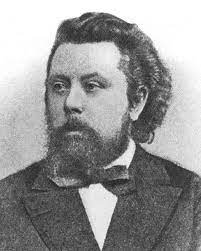Every day brings a new story. And each day contributes to the art of story telling -- in prose and poetry, in music, on the stage, on the screen, and, of course, in books.
Today is the story of March 24th
___________________________________________________________________________
It is the 83rd day of the year, leaving 282 days remaining in 2022.
On this date, a decade apart, two of the most successful and creative animators in U.S television were born.
In 1911, Joseph Barbera was born in New York City's Little Italy. Ten years earlier, in 1901, Ub Iwerks was born in Kansas City, Mo.
Barbera went on to create the cat and mouse duo of Tom & Jerry, and later, Huckleberry Hound, Yogi Bear, The Flinstones, The Jestons, and many others with his partner, William Hanna.
Iwerks began his career as a teenager working with Walt Disney. After seeing Disney's sketches of a proposed Mickey Mouse, Iwerks cleaned them up and refined them, presenting the finished drawings to Disney. Iwerks went on to animate Steamboat Willie, and other early movie shorts starring Mickey Mouse.
He and Disney had started working togther in Kansas City, and when Disney created his own company, Iwerks came along. But after a falling out between the pair in 1930, Iwerks started his own animation and production company, where he created Flip the Frog.
But the company wasn't as successful as Disney's, so Iwerks returned and worked there from 1940-1965. During that time, he created the process for combining live action and cel-animation. He worked to help develop the early attractions at Disney's theme parks. He won two Academy Awards.
He died in 1971 in Burbank, Calif.
Meanwhile, Barbera became interested in animation after viewing a screening of one of Iwerk's Mickey Mouse shorts, The Skeleton Dance. He began drawing cartoons, selling them to various magazines. He attended art school.
He worked at Fleischer Studios, Van Beuren Studios, and Terrytoons before landing a job at MGM's cartoon studio. There, he met Hanna, and the pair soon created Tom & Jerry. They chose the cat-and-mouse theme, Hanna told an interviewer, because they needed a duo that could generate action and conflict. "A cat after a mouse seemed like a good, basic thought."
Hanna and Barbera kept busy with the cat and mouse over the next 17 years, producing more than 200 films, winning seven Oscars, and being nominated for six more.
In 1957, they created their own company and moved to the then new medium of television, and after a slow start, hit it big with The Huckleberry Hound Show, and The Yogi Bear Show. They followed that up with The Flintstones, the first animated show to appear in prime time.
Hanna & Barbera soon became the largest animation company, and a slew of cartoon characters and shows followed. Among their popular characters were Quick Draw McGraw, Top Cat, Magilla Gorilla, and the Smurfs.
Barbera died in 2006 at his home in Los Angeles.























